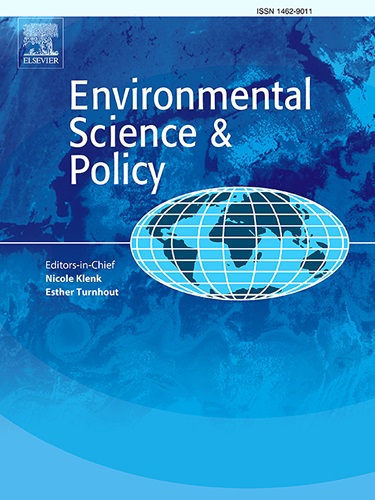The integration of peatlands into the EU Common Agricultural Policy: Recent progress and remaining challenges
IF 5.2
2区 环境科学与生态学
Q1 ENVIRONMENTAL SCIENCES
引用次数: 0
Abstract
The conservation and sustainable agricultural management of peatlands to protect biodiversity and mitigate climate change are major challenges for the EU and its member states (MSs). Therefore, for the Common Agricultural Policy (CAP) period 2023–2027, the EU has developed a new policy framework to better integrate peatland protection and management. This paper reviews the policy framework of the CAP 2023–2027 with respect to peatland integration and the CAP Strategic Plans of all 27 EU MSs for its implementation. The analysis is based on five key issues: (1) the management practices established under the Good Agricultural and Ecological Condition 2 (GAEC 2) to protect wetlands and peatlands, (2) the year in which GAEC 2 will enter into force in the MS, (3) decisions regarding the eligibility of paludiculture products, (4) the integration of peatland-related measures into the eco-schemes under Pillar I of the CAP, and (5) specific measures under Pillar II of the CAP to support the sustainable management of peatlands. Our benchmark study highlights the important progress made in recent years and the remaining challenges. The CAP 2023–27 provides a completely new framework for the integration of peatlands by combining minimum regulatory standards and financial incentives to support better peatland management. A few frontrunner countries are fully employing the CAP's flexible instrument approach to peatland protection. However, most MSs are still in the early stages of integrating peatlands into their CAP strategic plans. Accordingly, the regulatory standard of GAE2 is not yet complemented by a wider range of financial incentives.
将泥炭地纳入欧盟共同农业政策:最近的进展和仍然存在的挑战
泥炭地的保护和可持续农业管理以保护生物多样性和减缓气候变化是欧盟及其成员国面临的主要挑战。因此,在共同农业政策(CAP) 2023-2027年期间,欧盟制定了一个新的政策框架,以更好地整合泥炭地的保护和管理。本文回顾了CAP 2023-2027在泥炭地整合方面的政策框架,以及所有27个欧盟成员国实施CAP战略计划。该分析基于五个关键问题:(1)根据良好农业及生态条件2 (GAEC 2)制定的保护湿地和泥炭地的管理措施;(2)GAEC 2在MS生效的年份;(3)有关泥炭地产品资格的决定;(4)将泥炭地相关措施纳入CAP第一支柱下的生态计划;以及(5)CAP第二支柱下支持泥炭地可持续管理的具体措施。我们的基准研究强调了近年来取得的重要进展和仍然存在的挑战。CAP 2023-27通过结合最低监管标准和财政激励措施来支持更好的泥炭地管理,为泥炭地整合提供了一个全新的框架。一些领先的国家正在充分利用CAP灵活的工具方法来保护泥炭地。然而,大多数国家仍处于将泥炭地纳入其共同农业计划战略计划的早期阶段。因此,GAE2的监管标准尚未得到更广泛的财政激励措施的补充。
本文章由计算机程序翻译,如有差异,请以英文原文为准。
求助全文
约1分钟内获得全文
求助全文
来源期刊

Environmental Science & Policy
环境科学-环境科学
CiteScore
10.90
自引率
8.30%
发文量
332
审稿时长
68 days
期刊介绍:
Environmental Science & Policy promotes communication among government, business and industry, academia, and non-governmental organisations who are instrumental in the solution of environmental problems. It also seeks to advance interdisciplinary research of policy relevance on environmental issues such as climate change, biodiversity, environmental pollution and wastes, renewable and non-renewable natural resources, sustainability, and the interactions among these issues. The journal emphasises the linkages between these environmental issues and social and economic issues such as production, transport, consumption, growth, demographic changes, well-being, and health. However, the subject coverage will not be restricted to these issues and the introduction of new dimensions will be encouraged.
 求助内容:
求助内容: 应助结果提醒方式:
应助结果提醒方式:


